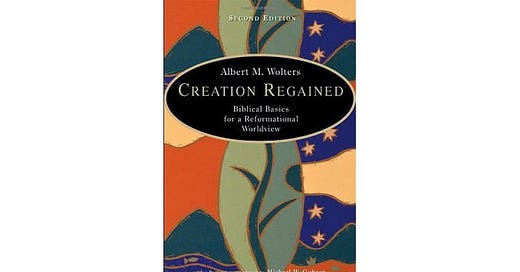I often have this conversation with people. They see the gospel story as about God rescuing sinners from this world. While this is, in a sense, true, it misses how huge the story of redemption actually is.
The mission of God in Christ is to reconcile all things back to himself. According to Colossians 1:15-20, Jesus Christ is the creator (v. 16) and sustainer (v. 17), of “all things” (Greek: “ta panta”), and God’s purpose is to “reconcile all things”(apokatallazai ta panta) to himself by making peace (eirene, or the Greek version of “Shalom”) through the atoning work of Christ on the cross.
While the salvation of individual human beings is the center of God’s redemptive plan, God’s desire to reconcile to himself “all things” is actually larger in scope than the individual salvation of human beings.
The scope of Creation was “all things;” the scope of the Fall was “all things,” and the scope of Redemption, therefore, is “all things.” God’s mission, then, is the redemption of his entire creation.
As N.T. Wright says, “To put it bluntly, creation is to be redeemed; that is, space is to be redeemed, time is to be redeemed, and matter is to be redeemed.”
The purpose of redemption is not simply to usher human souls off to some heavenly non-corporeal existence for all eternity; it is to restore what God had deemed “very good” in Genesis 1.
We must be clear in our definition of the “creation” that God so treasures that he is reconciling it back to himself.
When we say, “creation,” it is certainly the natural creation, but it is also much more. In the creation stories of Genesis 1 and 2, we learn that the pinnacle of God’s creative work was creating humans in the divine image. Then he rested from his labor, expecting the creative work to continue in those who are that divine image. The human race was commanded to rule, fill and subdue the creation (Genesis 1:26-28).
Albert M. Wolters, in his essential book, Creation Regained: Biblical Basics for a Reformational Worldview (available from Reintegrate partner, Hearts & Minds) writes,
“Mankind, as God’s representatives on earth, carry on where God has left off. But this is now to be a human development of the earth…From now on the development of the created earth will be societal and cultural in nature. In a single word, the task ahead is civilization.” (p. 41-42)
The scope of “creation,” then, includes the natural created order that God originally made, but it is broader than that. It also includes that which God had predetermined human beings to fashion as an extension of his creativity. All structures of society and culture must also be included in what we call “creation.”
“Creation is not something that, once made, remains a static quantity…The given reality of the created order is such that it is possible to have schools and industry, printing and rocketry, needlepoint and chess…We are called to participate in the ongoing creational work of God, to be God’s helper in executing to the end the blueprint for his masterpiece.” (Wolters, p. 44)
How does this understanding of “creation” help you to reintegrate your vocations with God’s mission in the world?




